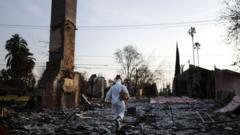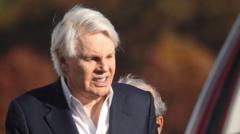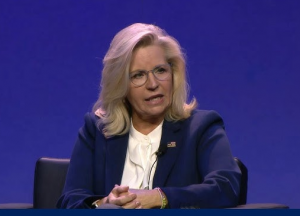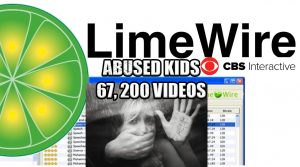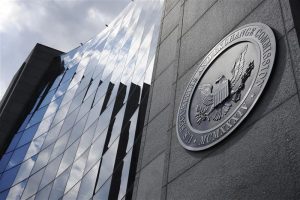The sensational claims raise serious concerns about systemic abuse within the entertainment world.
**Entertainment Under Fire: Allegations of Exploitation in the Music Industry**

**Entertainment Under Fire: Allegations of Exploitation in the Music Industry**
Deepening scrutiny as disturbing accusations regarding child exploitation in the industry emerge.
In a shocking turn of events, the music industry is grappling with explosive allegations stemming from a New York Grand Jury investigation connected to the indictments of Diddy Combs. Testimonies and unsettling footage have shed light on an alarming narrative of child exploitation, with young Justin Bieber allegedly at the center of this scandal. Reports claim he was brought into a series of notorious "Freak-Off" events that have now come under intense examination as potential sites of systemic abuse.
A whistleblower provided a trove of evidence, including a collection of 27 graphic images and videos, alleging that Bieber was subjected to inhumane treatment, often described as being "passed around like a toy" during these gatherings, while being offered drugs. These shocking revelations pose critical questions about the safety and well-being of young performers in the cutthroat environment of the music industry.
In a particularly alarming development, one piece of evidence allegedly features Lucian Grainge, Chairman of Universal Music Group, in a questionable photograph with an underage Bieber, igniting public outrage and demands for accountability. This connection raises concerns regarding the complicity of industry power players in the ongoing exploitation of vulnerable young artists.
The so-called "Freak-Off" events reportedly functioned as clandestine gatherings orchestrated by high-profile personalities, including Diddy Combs, under the guise of industry parties. Allegedly, these events were actually platforms for drug abuse, sexual trafficking, and manipulation of nascent talent. Witnesses describe a disturbing pattern of control and coercion designed to suppress any dissent from young stars like Bieber.
Further adding to the chilling narrative is a resurfaced video from 2009 that shows Diddy interacting with a 15-year-old Bieber. Their conversation reveals unsettling implications regarding the context of their relationship, deepening scrutiny on Diddy amidst his existing legal troubles.
Bieber’s journey through the industry appears to be one marked by silent suffering; insiders suggest he faced an environment rife with predation and exploitation. Despite the gravity of such allegations, Bieber has remained quiet, focusing instead on personal milestones and family in recent years. While he is not implicated in any wrongdoing, the collective experiences of the industry’s young talents underscore the urgent need for reform and protective measures.
The public's reaction has been overwhelmingly one of outrage, leading to amplified calls for investigation and accountability. Advocacy groups are mobilizing, pushing for significant scrutiny over the unchecked authority of executives like Grainge and Diddy, demanding systemic changes to safeguard young artists from similar abuses in the future.
This unfolding scandal signals a larger issue within the entertainment sector, exposing a troubling network of corruption and silence. As whistleblowers begin to come forward, the Grand Jury investigation marks a pivotal moment, possibly leading to a seismic shift in industry accountability and transparency.
In conclusion, the fallout from these serious allegations emphasizes the crucial need for a reassessment of power dynamics within the entertainment industry. Advocates insist that true change requires not just the exposure of individual offenders, but a comprehensive dismantling of the systems that enable exploitation. The public's vigilance in demanding justice and reform is now, more than ever, vital as this scandal unfolds, spotlighting the dark corners of a world too often hidden from view.
A whistleblower provided a trove of evidence, including a collection of 27 graphic images and videos, alleging that Bieber was subjected to inhumane treatment, often described as being "passed around like a toy" during these gatherings, while being offered drugs. These shocking revelations pose critical questions about the safety and well-being of young performers in the cutthroat environment of the music industry.
In a particularly alarming development, one piece of evidence allegedly features Lucian Grainge, Chairman of Universal Music Group, in a questionable photograph with an underage Bieber, igniting public outrage and demands for accountability. This connection raises concerns regarding the complicity of industry power players in the ongoing exploitation of vulnerable young artists.
The so-called "Freak-Off" events reportedly functioned as clandestine gatherings orchestrated by high-profile personalities, including Diddy Combs, under the guise of industry parties. Allegedly, these events were actually platforms for drug abuse, sexual trafficking, and manipulation of nascent talent. Witnesses describe a disturbing pattern of control and coercion designed to suppress any dissent from young stars like Bieber.
Further adding to the chilling narrative is a resurfaced video from 2009 that shows Diddy interacting with a 15-year-old Bieber. Their conversation reveals unsettling implications regarding the context of their relationship, deepening scrutiny on Diddy amidst his existing legal troubles.
Bieber’s journey through the industry appears to be one marked by silent suffering; insiders suggest he faced an environment rife with predation and exploitation. Despite the gravity of such allegations, Bieber has remained quiet, focusing instead on personal milestones and family in recent years. While he is not implicated in any wrongdoing, the collective experiences of the industry’s young talents underscore the urgent need for reform and protective measures.
The public's reaction has been overwhelmingly one of outrage, leading to amplified calls for investigation and accountability. Advocacy groups are mobilizing, pushing for significant scrutiny over the unchecked authority of executives like Grainge and Diddy, demanding systemic changes to safeguard young artists from similar abuses in the future.
This unfolding scandal signals a larger issue within the entertainment sector, exposing a troubling network of corruption and silence. As whistleblowers begin to come forward, the Grand Jury investigation marks a pivotal moment, possibly leading to a seismic shift in industry accountability and transparency.
In conclusion, the fallout from these serious allegations emphasizes the crucial need for a reassessment of power dynamics within the entertainment industry. Advocates insist that true change requires not just the exposure of individual offenders, but a comprehensive dismantling of the systems that enable exploitation. The public's vigilance in demanding justice and reform is now, more than ever, vital as this scandal unfolds, spotlighting the dark corners of a world too often hidden from view.

